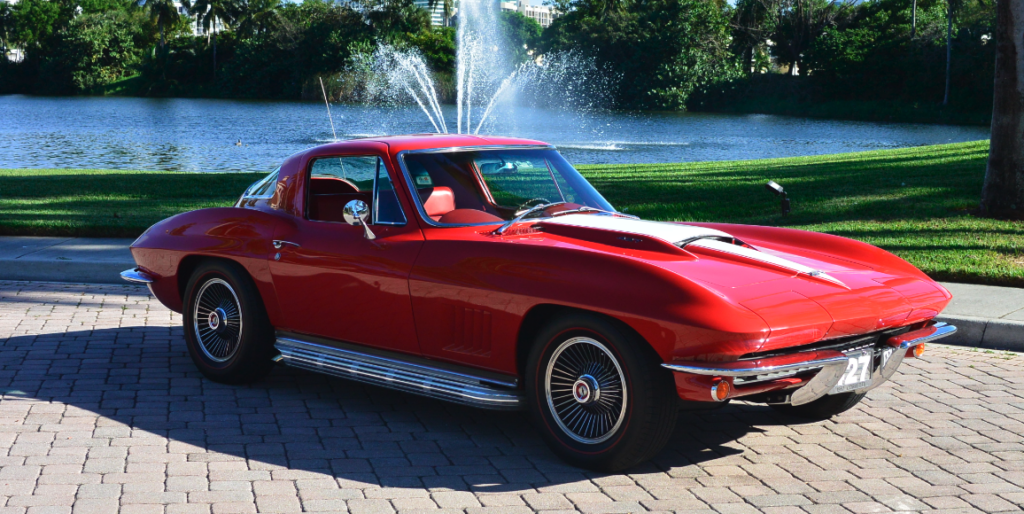
OWNERS NAME: STEPHEN GREENBLATT
YEAR: 1967
MAKE: CHEVROLET
MODEL: CORVETTE
SUB MODEL: 427 COUPE
BRIEF MANUFACTURER DETAILS AND SIGNIFICANT HISTORY OF CAR:
The Chevrolet Corvette (C2) is the second-generation Corvette sports car, produced by the Chevrolet division of General Motors (GM) for the 1963 through 1967 model years.
The 1967 Corvette Sting Ray was the last Corvette of the second generation, and five years of refinements made it the best of the line. Although it was meant to be a redesign year, its intended successor the C3 was found to have some undesirable aerodynamic traits. Duntov demanded more time in the wind tunnel to devise fixes before it went into production.
Changes were again modest: Five smaller front fender vents replaced the three larger ones, and flat-finish rockers sans ribbing conferred a lower, less chunky appearance. New was a single backup light, mounted above the license plate. The previous models’ wheel covers gave way to slotted six-inch Rally wheels with chrome beauty rings and lug nuts concealed behind chrome caps. Interior alterations were modest and included revised upholstery, and the handbrake moved from beneath the dash to between the seats. The convertible’s optional hardtop was offered with a black vinyl cover, which was a fad among all cars at the time.
The 427 was available with a 1282 ft³/min (605 L/s) Rochester 3X2-barrel carburetors arrangement, which the factory called Tri-Power producing 435 bhp (441 PS; 324 kW) at 5800 rpm and 460 lb⋅ft (624 N⋅m) at 4,000 rpm of torque.[30] The ultimate Corvette engine for 1967 was coded L88, even wider than the L89, and was as close to a pure racing engine as Chevy had ever offered in regular production. Besides the lightweight heads and bigger ports, it came with an even hotter camshaft, stratospheric 12.5:1 compression, an aluminum radiator, small-diameter flywheel, and a single huge Holley four-barrel carburetor. Although the factory advertised L88 rating was 430 bhp at 4,600 rpm, the true rating was said to be about 560 bhp at 6,400 rpm. The very high compression ratio required 103-octane racing fuel, which was available only at select service stations. Clearly this was not an engine for the casual motorist. When the L88 was ordered, Chevy made several individual options mandatories, including Posi traction, the transistorized ignition, heavy-duty suspension, and power brakes, as well as RPO C48, which deleted the standard heater and defroster to cut down on weight and discourage the car’s use on the street. As costly as it was powerful – at an additional $1,500 over the base $4,240.75 price – the L88 engine and required options were sold to a mere 20 buyers that year. With potential buyers anticipating the car’s overdue redesign, sales for the Sting Ray’s final year totaled 22,940, down over 5,000 units from 1966 results. Meanwhile, Chevrolet readied its third-generation Corvette for the 1968 model year.
BRIEF STORY OF THIS PARTICULAR VEHICLE:
Rally Red on red leather Interior, had a 5000-hour body off the frame restoration. Car has all options including power steering. Brakes and windows. Air conditioning, telescopic steering. Electronic ignition. Leather. Alloy optional wheels. Michigan red line tires, dude exhaust system, matching numbers engine 427 cu inch. 400 HP, Tri power carburetors, AM FM radio. Full tinted glass option, 4 speed M21 transmission, won the AACA National judging award and many other prominent awards, I have owned this car 23 years
